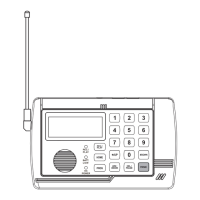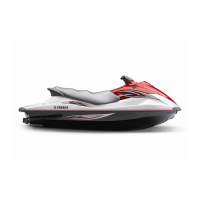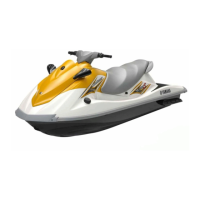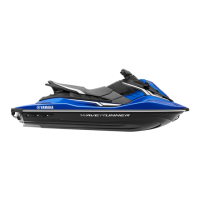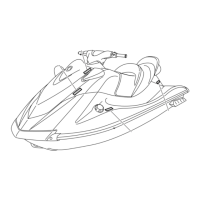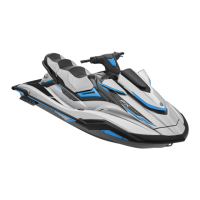Do you have a question about the Yamaha VX Sport and is the answer not in the manual?
Details PRI-ID, HIN, and engine serial numbers for identification.
Explains emission compliance and certification labels.
Describes manufactured date labels and CARB star ratings.
Locates various critical labels on the watercraft using diagrams.
Explains safety warnings, their meanings, and placement.
Details other labels like capacity, fire extinguisher, and compliance marks.
Covers operator age, passenger limits, PFDs, protective clothing, and helmet use.
Covers safe speed, distance, visibility, hazard avoidance, and rules of the road.
Details water-skiing practices and resources for boating safety info.
Emphasizes courtesy, environmental care, and responsible riding.
Defines key terms and terminology used in the manual.
Identifies exterior components of the watercraft with diagrams.
Identifies components located within the engine compartment.
Overview of primary controls and their operation.
Operation, settings, and care of the remote control transmitter.
Functions and settings of the security system for theft prevention.
Operation of engine stop, shut-off, and start switches.
How to use the throttle lever and steering system for control.
Checks and maintenance of cooling water outlet and water separator.
Explains core operational functions like the reverse system.
Details operational modes such as Low RPM Mode.
Explains the multifunction information center and displays.
Covers seat, handgrips, storage, and other equipment.
Recommends fuel type, octane rating, and handling precautions.
Recommends engine oil, checks, and procedures.
Procedures for draining bilge water on land and on water.
How to secure the watercraft properly for trailer transport.
Procedure for breaking in the engine to ensure longevity and performance.
A comprehensive list of checks before launching.
Detailed pre-launch checks including fuel, engine, battery, and steering.
Checks performed after launching the watercraft.
Verifying the engine idling speed is within the specified range.
General advice and familiarization with watercraft controls.
Emphasizes pre-checks, laws, and safe learning practices.
Correct riding posture and procedures for launching the watercraft.
Step-by-step guide to starting the engine safely in the water.
Proper methods for stopping the engine and securing the watercraft.
Techniques for safe and effective watercraft turning.
Explains stopping mechanisms and distances.
Using reverse and boarding procedures.
Detailed steps for boarding alone and with passengers.
Safely starting, capsized watercraft procedures, and beaching/docking.
Advice for operating in areas with thick weed growth.
Essential steps after using the watercraft.
Procedures to flush cooling passages and prevent clogging.
Steps for cleaning the hull, deck, and engine compartment.
Procedures for maintaining and storing the battery.
Preparations for storing the watercraft for extended periods.
Applying rust inhibitors to protect metal components.
Importance of periodic checks and lubrication for safety and efficiency.
Contents and use of the included tool kit.
Schedule for regular maintenance based on hours and months.
Procedures for changing engine oil and oil filter.
Technical details including dimensions, capacity, engine, and fuel.
Chart to diagnose and resolve common watercraft problems.
Steps for jet intake cleaning and handling emergencies.
How to start the engine using a booster battery and jumper cables.
Procedures for safely replacing blown fuses.
Instructions for safely towing an inoperative watercraft.
Procedures for handling a submerged or flooded watercraft.
Details of the watercraft's limited warranty coverage and exclusions.
Information on purchasing and benefits of extended service plans.
Details PRI-ID, HIN, and engine serial numbers for identification.
Explains emission compliance and certification labels.
Describes manufactured date labels and CARB star ratings.
Locates various critical labels on the watercraft using diagrams.
Explains safety warnings, their meanings, and placement.
Details other labels like capacity, fire extinguisher, and compliance marks.
Covers operator age, passenger limits, PFDs, protective clothing, and helmet use.
Covers safe speed, distance, visibility, hazard avoidance, and rules of the road.
Details water-skiing practices and resources for boating safety info.
Emphasizes courtesy, environmental care, and responsible riding.
Defines key terms and terminology used in the manual.
Identifies exterior components of the watercraft with diagrams.
Identifies components located within the engine compartment.
Overview of primary controls and their operation.
Operation, settings, and care of the remote control transmitter.
Functions and settings of the security system for theft prevention.
Operation of engine stop, shut-off, and start switches.
How to use the throttle lever and steering system for control.
Checks and maintenance of cooling water outlet and water separator.
Explains core operational functions like the reverse system.
Details operational modes such as Low RPM Mode.
Explains the multifunction information center and displays.
Covers seat, handgrips, storage, and other equipment.
Recommends fuel type, octane rating, and handling precautions.
Recommends engine oil, checks, and procedures.
Procedures for draining bilge water on land and on water.
How to secure the watercraft properly for trailer transport.
Procedure for breaking in the engine to ensure longevity and performance.
A comprehensive list of checks before launching.
Detailed pre-launch checks including fuel, engine, battery, and steering.
Checks performed after launching the watercraft.
Verifying the engine idling speed is within the specified range.
General advice and familiarization with watercraft controls.
Emphasizes pre-checks, laws, and safe learning practices.
Correct riding posture and procedures for launching the watercraft.
Step-by-step guide to starting the engine safely in the water.
Proper methods for stopping the engine and securing the watercraft.
Techniques for safe and effective watercraft turning.
Explains stopping mechanisms and distances.
Using reverse and boarding procedures.
Detailed steps for boarding alone and with passengers.
Safely starting, capsized watercraft procedures, and beaching/docking.
Advice for operating in areas with thick weed growth.
Essential steps after using the watercraft.
Procedures to flush cooling passages and prevent clogging.
Steps for cleaning the hull, deck, and engine compartment.
Procedures for maintaining and storing the battery.
Preparations for storing the watercraft for extended periods.
Applying rust inhibitors to protect metal components.
Importance of periodic checks and lubrication for safety and efficiency.
Contents and use of the included tool kit.
Schedule for regular maintenance based on hours and months.
Procedures for changing engine oil and oil filter.
Technical details including dimensions, capacity, engine, and fuel.
Chart to diagnose and resolve common watercraft problems.
Steps for jet intake cleaning and handling emergencies.
How to start the engine using a booster battery and jumper cables.
Procedures for safely replacing blown fuses.
Instructions for safely towing an inoperative watercraft.
Procedures for handling a submerged or flooded watercraft.
Details of the watercraft's limited warranty coverage and exclusions.
Information on purchasing and benefits of extended service plans.

